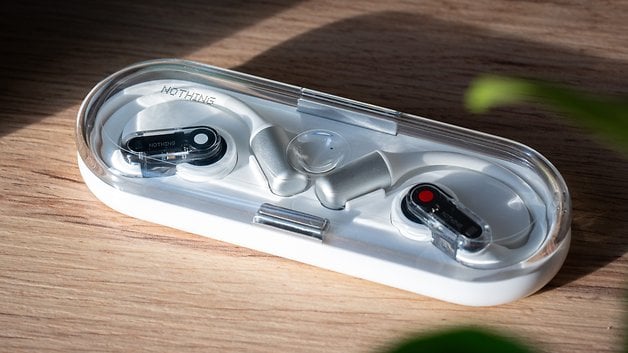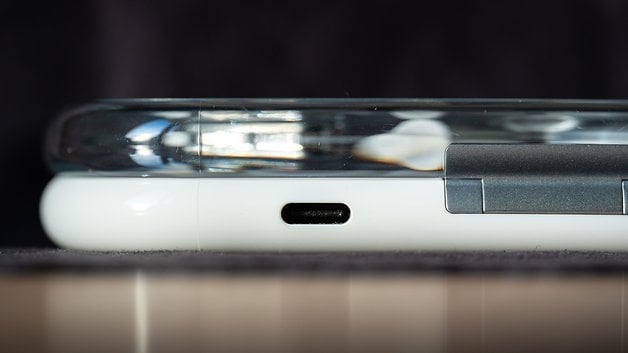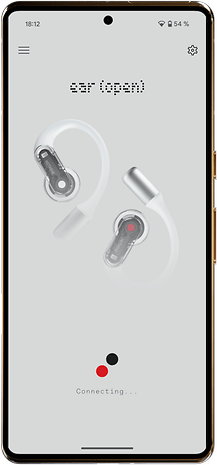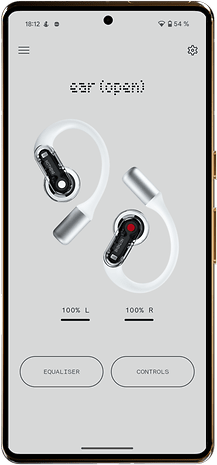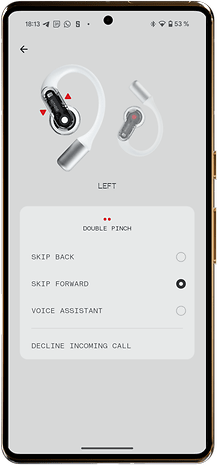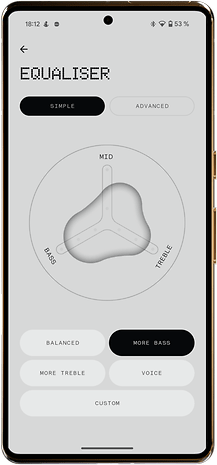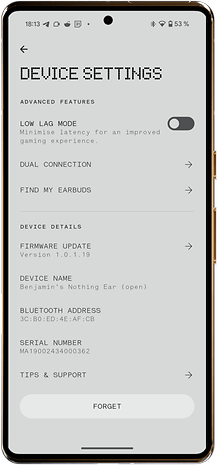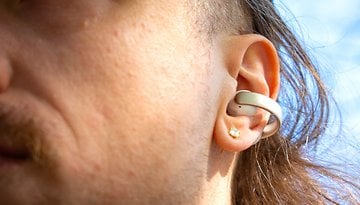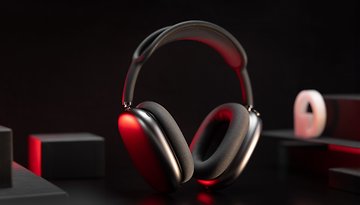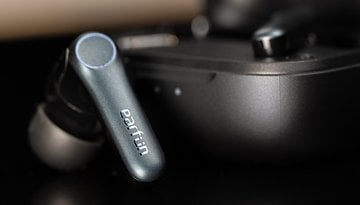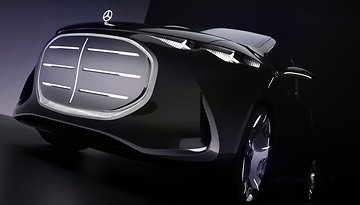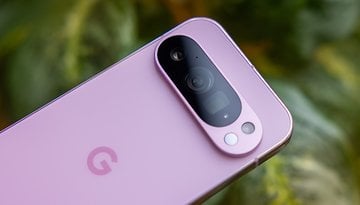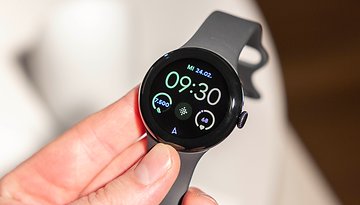Nothing Ear (open) Review: Open Earbuds that Pack a Punch
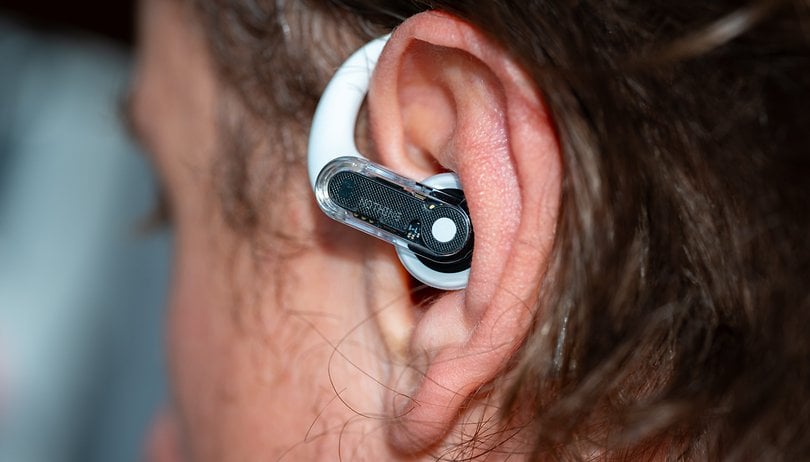

What else does Nothing's excellent line-up of in-ear wireless earbuds require in 2024? That's right, open-ear earbuds are an alternative to bone-conduction headphones and the Xiaomi Open Wear Stereo (review). With the Ear (open), Nothing introduced just such earbuds and we have gotten our hands on them for an exclusive review before the launch! Can Nothing pack its qualities in an open-ear design?
Good
- Very comfortable to wear
- Good bass performance
- Battery life of up to 8 hours
- Great equalizer + ChatGPT integration
Bad
- Sound quality decreases at high volumes
- No HD codecs
- No wireless charging support
- No ANC

The Nothing Ear (open) in a nutshell
High wearing comfort, good sound quality with a surprising amount of powerful bass, and excellent equalizers. Unfortunately, the Ear (open) gave way to its strong potential with the standard disadvantages of open-ear earbuds. Sound quality decreases at around 70 percent of the volume, Nothing failed to integrate HD codecs, and in many situations, the non-suppressible ambient noise is distracting. That's just too bad!
Design & wearing comfort
Open-ear earbuds have an important problem to solve for the wearer to enjoy good sound quality: Placing drivers over the ear canal of as many people with different ears as possible. Nothing uses a design where the earbuds are worn over the ear. Despite this design, the Nothing Ear (open) are comparatively compact with dimensions measuring 41 x 14 mm. However, coupled with their typical Nothing design, this pair is rather eye-catching.
Pros:
- Compact dimensions for open-ear earbuds.
- High wearing comfort thanks to its 8.1 g weight.
- IP54 certification.
Cons:
- Not easy to put on for those wearing glasses.
Okay, open-ear earbuds are not as established as conventional earbuds. I therefore recommend that you read my Xiaomi OpenWear Stereo review, which also works with conventional drivers. Alternatively, there are bone conduction headphones such as the Haylou PurFree BC 01, which transmit audio signals directly via your skull bone.
With the Ear (open), Nothing has managed to bring a particular pair of compact open earbuds onto the market. With dimensions measuring 126 x 44 x 19 mm, they are a little longer than the Xiaomi alternative, albeit flatter and a little narrower. At the same time, the earbuds themselves are a little smaller and at least in terms of size, are less noticeable when worn on the ear. Tipping the scales at just 8.1g per earbud, the weight is also light enough to make them really comfortable to wear.
You hang the Ear (open) over your ear and get used to this process after 4-5 times. It can get a little tight over the ear if you wear glasses or earrings in the helix position. Even if this makes placing the earbuds on a little more complicated, they do not restrict wearing comfort in my experience. The rather thin earbud of the Ear (open) was a good design decision!
The Ear (open) is very suitable for use in the rain. As with the Nothing Ear (a) (review), it also relies on a pinch operation. With this, the slightly thicker area of the earbuds, on which the Nothing logo is attached, is pressed together using two fingers. The advantage? Should the earbuds with IP54 certification be wet, there is no risk of incorrect input to interrupt music playback
App and convenience functions
The Nothing app is the control center for the Nothing Ear (open) on both Android and iOS platforms. In this application, you can fine-tune the excellent equalizers, activate a mode for low latency, and adjust the earbud's operation. If you use a Nothing smartphone, ChatGPT can be used with the earbuds.
Pros:
- Wonderful equalizer.
- ChatGPT integration with Nothing smartphones.
- Dual pairing.
Cons:
- Very few convenience features.
With the release of its Ear (2) last year, Nothing launched an advanced equalizer for selected headphones. Fortunately, this is compatible with the Ear (open). If desired, you can fine-tune an 8-band equalizer and adjust both the volume and the width of the frequency range of each individual band (Q factor). The control options for the Ear (open) are also freely configurable. Unfortunately, you won't find many more features in the app.
You can activate a mode for low latency and control the dual pairing function. Unfortunately, features such as 3D audio or spatial audio are missing. If you use a Nothing smartphone, you can also access ChatGPT and use it as a voice assistant of sorts. If you want to find out more about this feature, read Antoine's Nothing Ear review or his opinion piece about Nothing's ChatGPT integration.
Sound quality
Unlike Xiaomi, Nothing does not integrate ANC (Active Noise Cancellation) into its open earbuds. At the same time, the manufacturer relies on low resolution Bluetooth codecs. The earbuds only support SBC and AAC. With 14.2 mm drivers and the option to boost bass in podcasts and music, Nothing still aims to offer good sound quality.
Pros:
- Surprisingly good bass performance.
- High volume levels.
- Optimal driver placement 90 percent of the time.
Cons:
- Sound quality still lags behind in-ear earbuds.
- No high-resolution codecs support.
- Ears suffers after hitting 60 percent volume.
Open-ear earbuds struggle with two hurdles in terms of sound quality: One, it is more difficult to convey all frequencies of the audible range to the eardrum as the drivers are not placed directly in the ear and are sealed with silicone or other materials. Two, the open-ear design allows plenty of noise to reach the ear.
Nothing solved the first problem rather effectively by optimally positioning the driver in front of the ear canal. This is where the well thought out design paid off, so it is a pity that the Ear (open) does not support HD codecs. Although subtleties in the music cannot be perceived as well with this open-ear design anyway, I would have liked to hear the 14.2 mm drivers with LDAC or at least AptX HD.
One of the reasons for this is that the Ear (open) provides a surprising amount of bass power for open-ear earbuds. The equalizers offer a mode that boosts bass and with this, the earbuds can deliver low frequencies rather efficiently. Although they lack a little pressure, bass tracks in Primus songs or electronic music, for example, are definitely fun to listen to at medium volume.
One negative aspect of the Ear (open), however, is how sound changes significantly at around 60 percent of the maximum volume. The earbuds become much more treble-heavy and tend to hurt the ears. This is generally a problem with open-ear earbuds as they cannot suppress ambient noise. Such a situation tends to have you listen to podcasts and music at excessively high volumes when you are on the move. This can quickly lead to earaches during prolonged use.
What is really pleasant, however, is making calls with the Ear (open) courtesy of its open-ear design. I can hear my own voice better here than with other in-ear earbuds and therefore, do not speak too loudly in a conversation. The other party also confirmed that I could hear them well when making calls over a mobile network.
Overall, the Nothing ear (open) offers above-average sound quality for open-ear earbuds, at least at medium volume levels. The impressive bass performance is fun and at the same time, solves a problem that many other open-ear designs feature. However, without HD codecs and with the changes in sound from 60 percent of the volume, they fall short of their potential. That's a shame!
Battery and charging
Battery life of the Nothing Ear (open) is 8 hours when playing music and 6 hours when making calls. As an additional 635 mAh battery is integrated in the case, runtime is extended to 30 hours. Charging is exclusively wired, but there is a fast-charging function that provides two hours of music playback in ten minutes.
Pros:
- Very good battery life.
- Fast charge function.
Cons:
- No wireless charging support.
With a battery life of 8 hours with active music playback, the Nothing Ear (open) is among the longest-running earbuds. However, the open-ear earbuds also come without ANC and offer comparatively much space for a large battery. If we were to look at its competitor, Xiaomi, we see a runtime of 7.5 h for the Openwear Stereo (review). Runtimes of an entire work day seem to be the standard for open-ear earbuds.
With the charging case, you can extend the runtime to 30 hours. This lets you fully charge the earbuds almost four times. If that's not enough, there's fast charging support. Unfortunately, you will have to live without wireless charging.
Technical specifications
| Technical specifications | |
|---|---|
| Device | Nothing Ear (open) |
| Image |  |
| Design |
|
| Weight |
|
| Dimensions |
|
| IP rating |
|
| Audio |
|
| Frequency response |
|
| ANC |
|
| Bluetooth |
|
| Codec |
|
| Multipoint |
|
| Battery life |
|
| Battery life with housing |
|
| Wireless charging |
|
Conclusion
With an impressive bass performance, the Nothing Ear (open) offers the exact feature the competition failed to deliver thus far. Nothing would therefore have had a good chance of convincing new customers to purchase open-ear earbuds. Unfortunately, the manufacturer failed to realize the initial potential at 70 percent of the volume at best. If you want to fade in ambient noise via volume, the Ear (open) suddenly experiences poorer sound quality.
Since Nothing also packed pretty good drivers into its first open-ear earbuds, it's a real shame that there are no HD Bluetooth codecs accompanying SBC and AAC codecs. Together with the very high wearing comfort, these could make the Ear (open) suitable as a hi-fi recommendation for home use.
Overall, I don't know exactly when should I choose the Nothing Ear (open) over the excellent Nothing Ear (a) during the review. I could barely understand podcasts or music when riding noisy trains. The resolution of the audio codecs was insufficient for concentrated listening to music at home. In both scenarios, the exciting ChatGPT support and Nothings' fantastic equalizer don't really help, either.
The open-ear earbuds from Nothing are therefore on a similar level to Xiaomi's new models. They are superior in terms of sound quality but lack rudimentary noise suppression.
